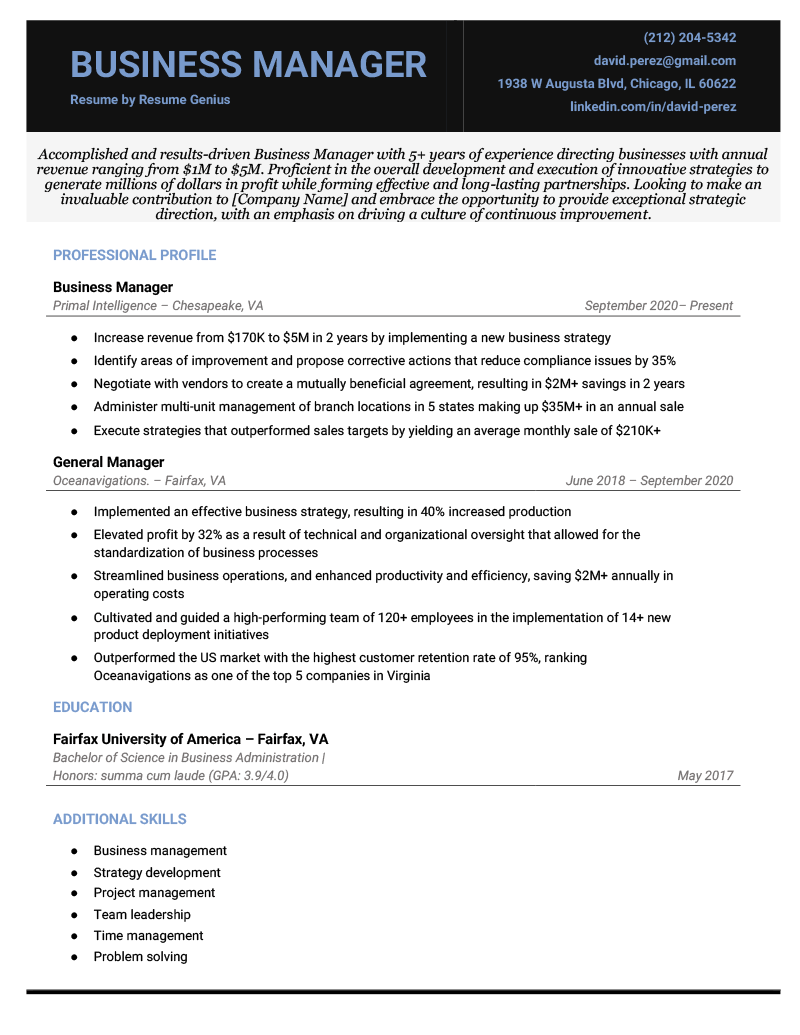Business Analyst Resume Template (Text Format)
FIRST AND LAST NAME
Email: your.email@email.com
Phone: (123) 456-7891
Address: Street, City, State
LinkedIn: linkedin.com/in/yourprofile
SUMMARY
Technical Business Analyst with 7+ years of experience supporting e-commerce retailers through developing IT solutions. Possess a Degree in Business Admin and a Certification of Competency in Business Analysis. Track record of saving retailers over $500k annually thanks to innovative solution strategies & sound Gap analysis techniques. Thrive in multicultural environments which has helped my employers grow in size and reputation globally.
PROFESSIONAL EXPERIENCE
- Develop business architecture using requirements such as scope, processes, alternatives, and risks
- Analyze client’s business requirements and processes through document analysis, interviews, workshops, and workflow analysis
- Liaise between business and technical personnel to ensure a mutual understanding of processes and applications
- Redesigned customer communication and fulfillment protocols, increasing customer satisfaction rates by 35% and saving the company 500K+ annually due to reduction in refund requests
- Conduct 5+ levels of testing including functional, regression, user acceptance, integration and performance to verify the client’s needs are met
- Engage client to gather software requirements/business rules, and ensure alignment with development teams
- Facilitate monthly meetings with clients to document requirements and explore potential solutions
- Completed in-depth analysis of business processes, boosting revenue by 15% in 2019
- Evaluate risks related to requirements implementation, testing processes, project communications, and training saving the company on average $5,000+ annually
- Translate stakeholder requirements into over 10 different tangible deliverables such as functional specifications, user cases, user stories, workflow/process diagrams, data flow/data model diagrams
EDUCATION
Cowell University, Chicago, IL, Bachelor of Arts in Business Administration Candidate, June 2014
- Graduated Cum Laude
- GPA: 3.8/4.0
SKILLS
- Familiar with Agile software development methodology
- Expert knowledge of SQL and relational database management systems
- Skilled with Wrike and AtTask project management software
- Proficient in Microsoft Office (Word, Excel, Outlook, PowerPoint, Visio)

















